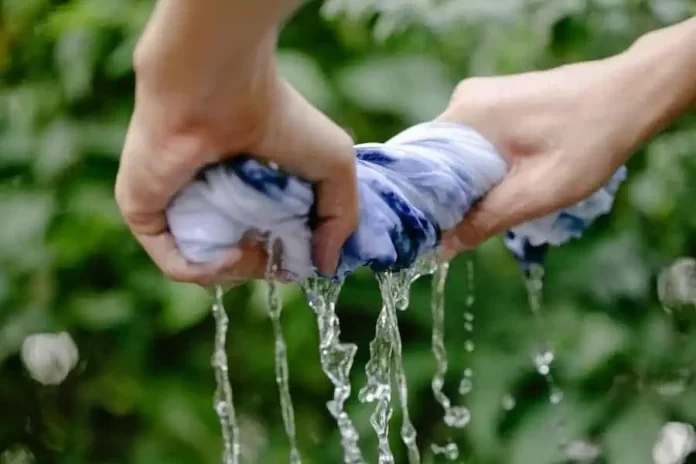In the quest for more sustainable and eco-friendly living, people are constantly searching for alternative materials that not only serve their functional purposes but also reduce their environmental impact. Water hyacinth, an aquatic plant found in tropical regions, has gained attention as a versatile and eco-friendly material that can be used in various applications. In this SEO blog post, we’ll explore what water hyacinth material is, its properties, and its many uses, highlighting its potential to promote sustainability.
What Is Water Hyacinth Material?
Water hyacinth material refers to products and materials made from the fibrous stems and leaves of the water hyacinth plant (Eichhornia crassipes). This plant is native to South America but has spread to various parts of the world due to its invasive nature. Its rapid growth and ability to cover large areas of water bodies have made it a significant environmental concern.
However, rather than being a problem, water hyacinth can be a solution. Harvesting and processing the plant for various purposes can help control its spread and provide economic opportunities for local communities. This is valued for its sustainability, durability, and unique aesthetic qualities.
Properties Of Water Hyacinth Material:
Sustainability:
This is highly sustainable. It is derived from an abundant, renewable source, the water hyacinth plant, which grows prolifically in tropical regions. Using this material helps to control the spread of this invasive plant while providing economic opportunities for local communities.
Durability:
Water hyacinth fibers are remarkably durable and resistant to wear and tear. This property makes it ideal for various applications where strength and longevity are essential.
Lightweight:
Despite its durability, water hyacinth material remains lightweight. This characteristic makes it easy to transport and work with, especially in the crafting and furniture industries.
Natural Aesthetics:
It has a unique natural aesthetic. Its rustic and organic appearance adds a touch of charm to products made from it, making them visually appealing and distinct.
Biodegradability:
This material is biodegradable, meaning it can decompose naturally over time without causing harm to the environment. This feature aligns perfectly with eco-friendly principles.
Insulation:
Water hyacinth’s natural composition provides good insulation properties. This makes it suitable for use in products that require temperature control or protection from external elements.
Versatility:
This is versatile and can be woven or molded into various shapes and forms. This versatility allows for its application in a wide range of products, from furniture to fashion and beyond.
Low Maintenance:
Products made from water hyacinth material are relatively low-maintenance. They are easy to clean and can withstand exposure to outdoor elements.
Renewability:
The water hyacinth plant grows quickly, making it a renewable resource for material production. Harvesting and processing do not significantly deplete its population.
Non-Toxic:
It is non-toxic and safe for use in household items. It does not emit harmful chemicals, making it suitable for furniture and decor in homes.
These properties make water hyacinth material an attractive choice for those seeking sustainable and environmentally friendly alternatives in various aspects of their lives.
Uses Of Water Hyacinth Material:
Furniture: Water hyacinth material is commonly employed in the production of furniture. This includes chairs, sofas, tables, and outdoor furniture. The durability and natural aesthetics of water hyacinth make it an appealing choice for both indoor and outdoor settings.
Home Decor: Water hyacinth is frequently used in creating decorative items for the home. This can include baskets, trays, vases, and wall hangings. Its rustic charm adds a touch of natural beauty to interior decor.
Fashion and Accessories: This is woven into stylish fashion items and accessories. This includes handbags, hats, belts, and footwear. The eco-friendly aspect of these products appeals to consumers who prioritize sustainable fashion.
Crafts: Artisans and craft enthusiasts often use water hyacinth material in their creations. It can be woven, braided, or shaped into a variety of artistic pieces, such as sculptures, wall art, and even lampshades.
Garden and Landscaping: In gardening and landscaping, water hyacinth material finds various applications. It can be used as mulch, garden borders, or even pond liners. Its biodegradability and natural appearance make it a suitable choice for outdoor settings.
Storage Solutions: Water hyacinth baskets and containers are widely used for storage purposes. They come in various sizes and shapes, making them versatile for organizing and decluttering spaces.
Pet Products: Water hyacinth is used in manufacturing pet accessories such as pet beds, scratching posts, and toys. Its natural texture and eco-friendliness make it a preferred choice for pet owners concerned about their pets’ comfort and environmental impact.
Tableware: Water hyacinth placemats, coasters, and table runners are popular additions to dining settings. They provide an eco-conscious alternative to traditional tableware materials.
Insulation: Due to its natural insulating properties, water hyacinth material can be used in products requiring temperature control, such as wine bottle holders or cooler bags.
Eco-Friendly Packaging: It can be fashioned into packaging materials like bags and boxes. It serves as a sustainable alternative to single-use plastics or other non-biodegradable packaging options.
These diverse uses of water hyacinth material demonstrate its versatility and eco-friendliness. Its adoption in various industries and applications promotes sustainable living and reduces the environmental footprint of products.
Conclusion:
It is a sustainable and versatile choice for a wide range of products. Its unique properties make it an attractive option for those seeking eco-friendly alternatives in their daily lives. By supporting products made from water hyacinth, consumers can contribute to the control of this invasive plant while enjoying the benefits of a sustainable and natural material. Embracing water hyacinths in various applications is a step towards a greener and more environmentally responsible future.


